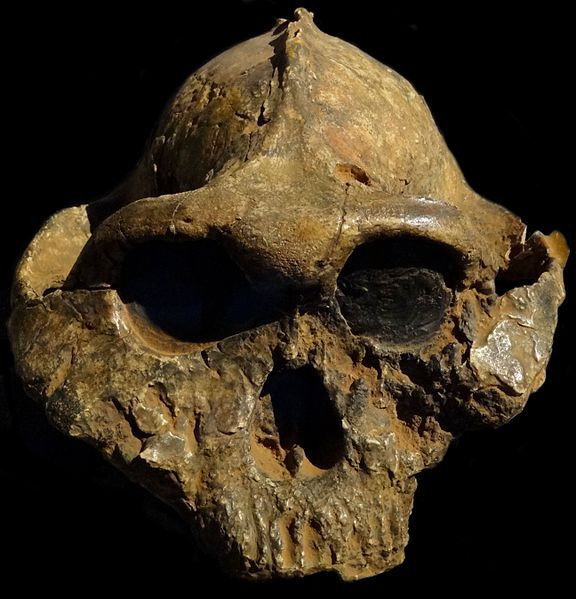The 'Nutcracker Man' Diet: Extinct Species Of Early Human Survived on 'Tiger Nuts,' Not Meat

Fresh analysis of an extinct relative of humans suggests our ancient ancestors dined primarily on tiger nuts, which are edible grass bulbs, settling a discrepancy over what made up prehistoric diets. According to a new study published in the journal PLOS One, the strong-jawed ancient hominin known as paranthropus boisei, nicknamed “Nutcracker Man,” which roamed East Africa between 2.4 million and 1.4 million years ago, survived on a diet scientists previously thought implausible.
The study suggests paranthropus boisei derived up to 80 percent of their tissues from low-quality foods like grasses and sedges, so-called C4 sources. As Live Science notes, controversy surrounded whether or not these kinds of plants could have provided enough nutrition for large-brained hominin to subsist. Scientists have long debated why Paranthropus boisei had such strong jaws made for eating hard foods like nuts, but their teeth appeared better suited for soft foods. The answer seems to lie with C4 tiger nuts.
"Tiger nuts, still sold in health-food shops as well as being widely used for grinding down and baking in many countries, would be relatively easy to find," study author Dr. Gabriele Macho, a paleoanthropologist from the School of Archaeology at Oxford University, said in a statement. "They also provided a good source of nourishment for a medium-sized hominin with a large brain. This is why these hominins were able to survive for around one million years because they could successfully forage - even through periods of climatic change."
To test whether early hominins could have sustained themselves on high-fiber foods, Macho studied modern-day baboons in Kenya’s Amboseli National Park. She argued that the environment experienced by baboons is similar to the one “Nutcracker Man” would’ve known millions of years ago.
Young baboons in the park eat large amounts of C4 plants like tiger nuts, which contain high levels of vitamins, minerals and fatty acids. They are also rich in starches, which are abrasive and cause tooth decay. Macho observed damage to teeth enamel in both the skeletal remains of “Nutcracker Man” and in the teeth of young baboons, suggesting tiger nuts were to blame in both cases.
"It bothered me that every time new evidence for p. boisei was presented and celebrated as solving one aspect of its morphology or biology, it contradicted another," Macho told Live Science. "There had to be a way that combined all evidence from morphology to biology and environment. After all, p. boisei was a successful species that lived for over a million years. It must have done something right."
Macho maintains that an individual hominin could have extracted enough nutrients – around 2,000 calories a day – from a tiger nut-based diet in about two to three hours. That’s about the foraging time typical of large-bodied primates like Paranthropus boisei.
The cranium of “Nutcracker Man” was discovered in 1959 in Tanzania. The well-preserved fossilized skull was dated to about 1.75 million years ago. Analysis of the teeth and jaw of this prehistoric cranium along with data obtained from observing baboons led Macho to her conclusions, but she admits the research isn’t without its faults.
“Ascertaining the diet of an extinct species is imprecise at best, and the present study does not pretend otherwise,” she wrote. “Rather, the outcomes of the models are of heuristic value as they aim to determine whether a medium-sized large-brained hominin could have subsisted on a predominantly C4 diet.”
© Copyright IBTimes 2025. All rights reserved.






















